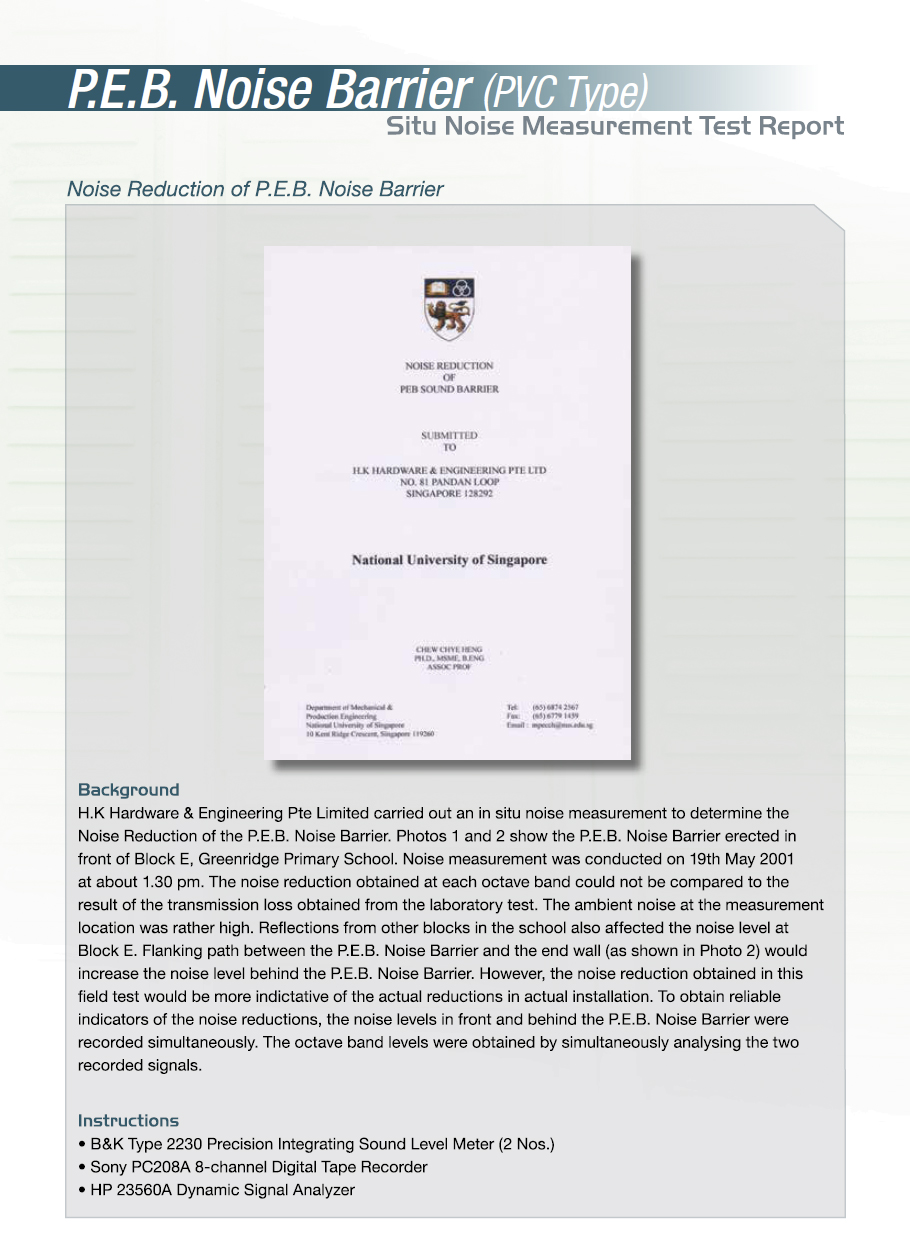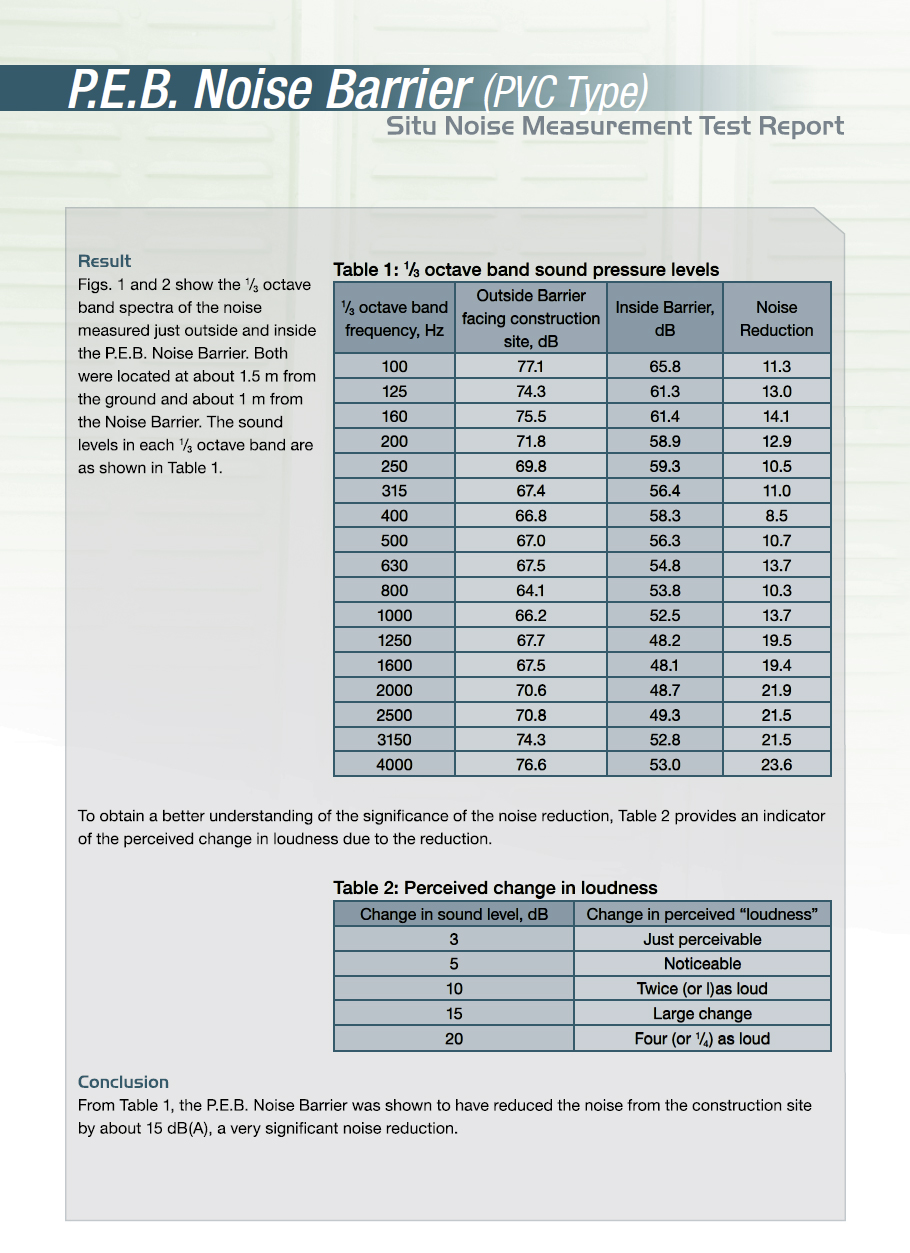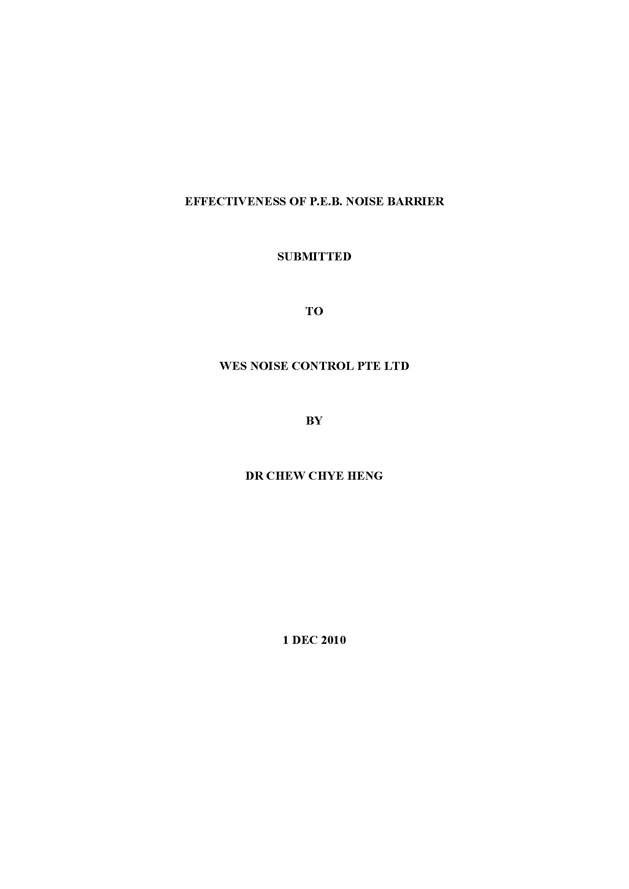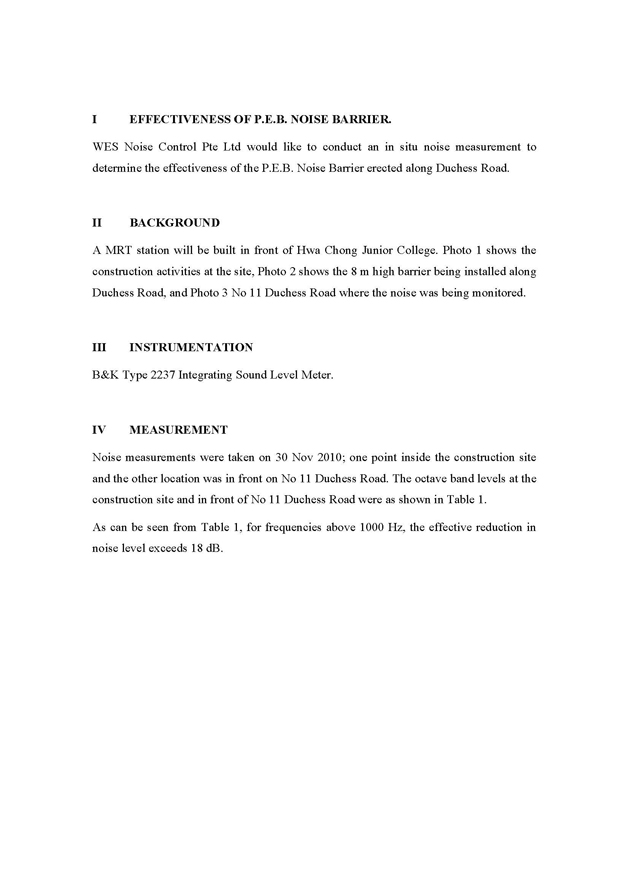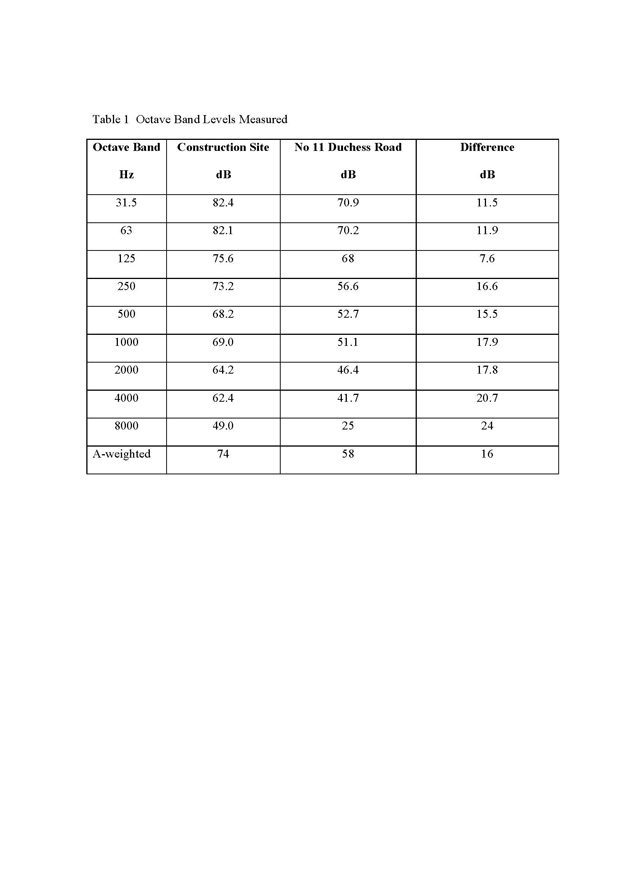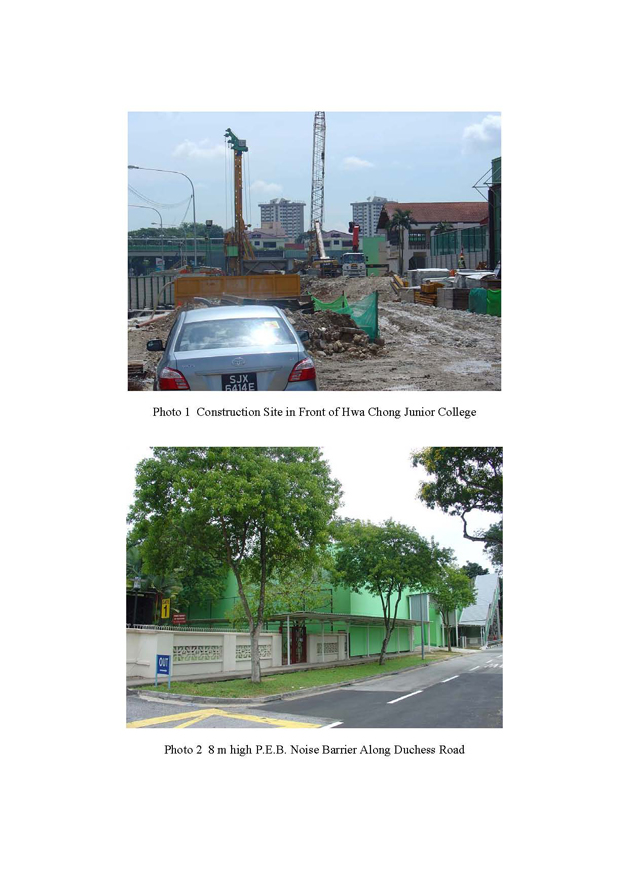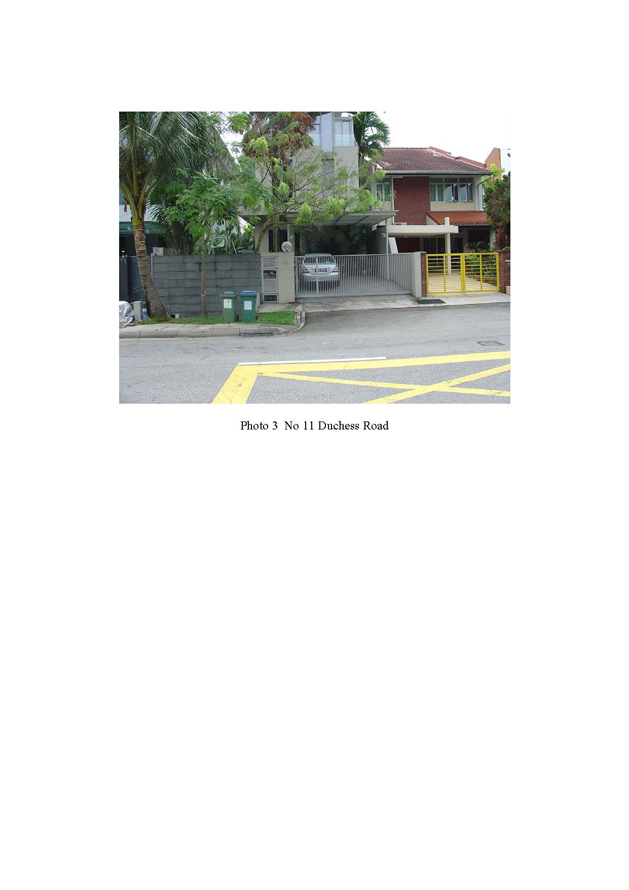Environmental Noise is already recognized as a health risk and P.E.B. Noise Barrier has shown to have reduced the noise from the construction site.
P.E.B. Noise Barrier
Environmental Noise is now recognized as a significant health issue by many and it is classified as noise that is unwanted or harmful outdoor sound, created by human activities, including noise emitted from sites of industrial activity such as building and construction
What constitutes as harmful noise? In summary, noise intensity is measured in decibel units. The decibel scale is logarithmic; each 10-decibel increase represents a tenfold increase in noise intensity. Human perception of loudness also conforms to a logarithmic scale; a 10-decibel increase is perceived as roughly a doubling of loudness.
Subjected to 45 decibels of noise, the average person cannot sleep. At 120 decibels the ear registers pain, but hearing damage begins at a much lower level, about 85 decibels. The duration of the exposure is also important. For construction sites, the decibel level can go up to 95db easily. And construction sites will be there for long periods of time, thus affecting the people who stay around that area for long periods too, which may affect and cause hearing damage. See details
Noise is now recognized as a controllable problem that can be minimized via noise reduction products. Sound walls are classified as reflective or absorptive. Such a Noise barrier is The P.E.B. Noise Barrier, which helps effectively reduce construction noise, thus making worksites more environmentally friendly and less noise pollution for the people around the area of construction. Not only does it help to reduce construction costs, it also serves to beautify building sites and surrounding areas. This means little or no noise is reflected back towards the source or elsewhere.
For outdoor applications such industrial and construction noise, nothing outperforms a well-engineered and efficient absorptive sound wall like the P.E.B Noise Barrier.

